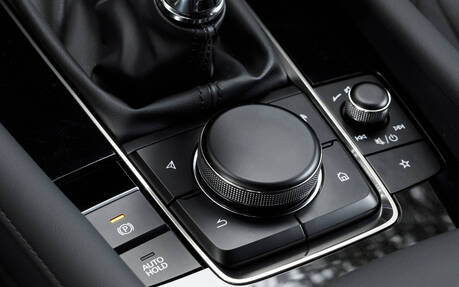German Experts Say Mazda3 Has the Best Human-Machine Interface
If you own or have read our many reviews of Mazda products, then you know that the whole human-machine interface is different from most other cars on the road today, which are built around some kind of touchscreen. And the multimedia system that powers the centre display is neither the most inspiring nor the easiest to use.
Yet, there are people who will tell you it’s the best interface in the industry.
- Also: Reliability: Multimedia Systems Are Still a Problem
- Also: Screens in Cars: When Will the Madness End?
Recently, German motoring association Allgemeiner Deutscher Automobil-Club (ADAC)—the largest of its kind in all of Europe—conducted a study in collaboration with the Augsburg University of Applied Sciences to determine which compact cars have the safest infotainment systems.
The Mazda3 came out on top, as experts praised the fact that the infotainment, navigation and other vehicle functions are controlled via an ergonomically placed rotary dial, similar to the one in BMW cars. They said this setup reduces driving distractions compared to repeatedly tapping a touchscreen in another vehicle.

Just to be clear, Mazda does have touchscreens, but they can only be used when parked. The touch function is disabled while driving in a move to enhance safety.
The ADAC also noted how the Mazda3’s screen is mounted close to the windshield and into the driver’s field of vision, how the available head-up display provides key information at a glance, and how the simple HVAC controls positioned below the screen make it easy to adjust the temperature and ventilation without taking your eyes off the road.

Do you think Mazda’s HMI approach is really the best and should be emulated by other car companies? When you look at all these new models arriving with large digital interfaces, from Tesla to Kia to startups like VinFast and Fisker, it doesn’t appear to be that way.
If you ask Matthias Junghanns, head of BMW i Interior Design, he’ll tell you the auto industry’s obsession with giant screens will eventually die down—even though the younger car buyers see them as extensions of their smartphones, tablets, gaming consoles and other gadgets.
